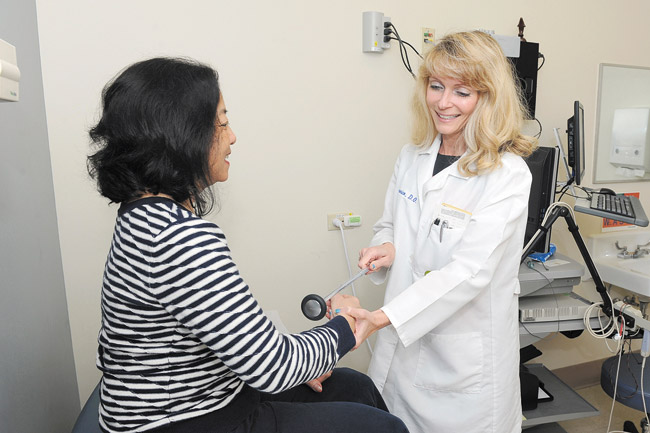Managing Multiple Sclerosis
Dr. Monique Canonico
Neurologist at Kaiser Permanente Hawaii
Where did you receive your schooling and training?
I attended medical school at Kansas City University of Medicine and Biosciences and did my neurology residency at Walter Reed Army Medical Center in Washington, D.C.
mw-dih-dr-monique-m-canonico-lt002
How long have you been in practice?
Seventeen years.
What inspired you to go into neurology?
I enjoyed neuroanatomy as a second-year medical student. When I started medical school rotations, I found treating the brain and its complex diseases challenging but rewarding.
What got you interested in working with MS (multiple sclerosis) patients?
After residency, I lucked out and was assigned as a neurologist to Tripler Army Medical Center. The then-director of Hawaii MS Society called and asked if I’d speak to Hawaii individuals with MS, and it grew from there. I now sit on the board of our Hawaii MS Society and still give biannual MS patient talks on Oahu, Kauai, Maui and the Big Island.
What is MS?
Multiple sclerosis is a neurological disease that affects the brain and the spinal cord. The illness disrupts the communication between the brain and the body, and can be quite disabling.
How does a person acquire MS?
We presently believe that both environment and genes play a role in who develops this disease. Females are three times more likely to be affected.
What are the symptoms?
The individuals can get weakness, tingling, thinking problems, fatigue, and balance and walking difficulties.
How is MS diagnosed?
Typically, there will be a physical exam followed by an MRI of the brain and upper spinal cord. The MRI looks for signs of demyelination, which happens in this disease. The myelin helps the nerves conduct properly, and if disrupted the body exhibits symptoms such as numbness, weakness and spasms. Occasionally, a person also may need to undergo a spinal tap, which is when we evaluate the fluid that bathes the brain and spinal cord.
Is it curable, or once you have MS is it all about disease management?
Right now we have medications to slow down the progression. Scientists are working on a cure, but we are not there yet. Patients may be offered one of the treatments, depending on their disease type.
What kinds of treatments are available for people living with MS?
MS is thought to be an autoimmune disease, meaning that the body attacks itself. The current remedies focus on calming down the immune system and preserving function. There are injections into the muscle, intravenous infusions, and also pills that may be useful. Everyone responds differently, though. In addition to prescribed medicine, physical activity is very important for MS patients.
Studies of people living with MS have shown exercise can help with depression and fatigue, improve strength and increase participation in social activities.
Anything else you’d like to add?
With an average age of 30 for MS onset, this disease can be a real hardship. It strikes people in the prime of their life, and particularly problematic is the cognitive change, or thinking problems, that it can cause in the young working population. We have more than 500 people in Hawaii living with MS. MS Society conducts support groups Leeward and Windward, which is a great way for patients to connect with each other and draw upon group strength.
Hawaii MS Society is hosting Walk MS April 25 at Aloha Stadium. The festive program starts at 4 p.m. and will include live music and food. To learn more about the walk, visit walkmshawaii.org. For information on the walk, the Hawaii MS Society, or the Leeward and Windward support groups, call 532-0806.






